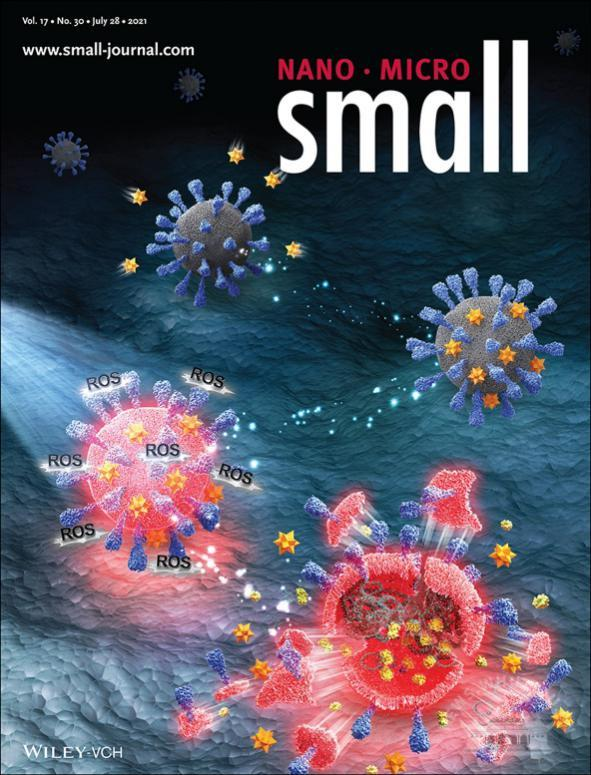Recently, the group of Wang Lianrong and Gu Meijia's from WHU’s School of Pharmacy has made significant progress in applying a new type of membrane-targeting photosensitizer with aggregation-induced emission (AIE) characteristics for the efficient inactivation of human coronaviruses, exploring a new method for the specific and efficient inactivation of human coronavirus under mild reaction conditions with low cytotoxicity, which is also environmentally friendly. The paper was published in the international journal Small on July 28 and selected for the journal’s back cover.

The paper is entitled A Membrane-Targeting Photosensitizer with Aggregation-Induced Emission Characteristics for Highly Efficient Photodynamic Combat of Human Coronaviruses. Chen Sijie’s Team from the Ming Wai Lau Centre for Reparative Medicine at Karolinska Institutet and Zhao Engui’s Team from the School of Science of Harbin Institute of Technology also participated in the research. WHU’s School of Pharmacy is the first author and co-first corresponding institution.
The spread of the COVID-19 pandemic, caused by SARS-COV-2, has posed great threats to human health and life. Viruses on high-touch surfaces are important routes of transmission. Cutting off transmission routes is a critical step in controlling the spread of COVID-19. Photodynamic therapy (PDT) applies photosensitizers and light to induce the death of target pathogens. It has attracted wide attention in recent years with the superiority of minimal invasiveness and limited antibiotic resistance. Photosensitizers synthesized from traditional fluorophores are usually affected by aggregation-caused quenching (ACQ), which greatly limits its application, while photosensitizers with the characteristics of AIE are not affected by the ACQ effect, showing significant advantages in photodynamic therapy.
Human coronaviruses (including SARS-COV-2) are enveloped viruses with lipid bilayer covering their capsid and genetic materials, which could provide additional protection for the virus outside the host cell. Since virus surface proteins vary among different human coronavirus species and mutants, the lipid envelope may serve as a conservative target for photosensitizers. The team members designed a new type of membrane-targeting photosensitizers with AIE characteristics, namely, DTTPB, and applied it to photodynamic combat of human coronaviruses. DTTPB could specifically target plasma membranes in different cell types, as well as the lipid bilayer envelope of the virus, such as human coronaviruses HCoV-OC43 and HCoV-229E. Besides, DTTPB exhibited a broad absorption band covering the whole visible light range. Thus, DTTPB showed higher ROS efficiency than the widely-used photosensitizers, Rose Bengal (RB), under white-light irradiation.
In the presence of 800 nM DTTPB, all human coronaviruses HCoV-229E could be inactivated after irradiation with 9 mW/cm−2 white light for 20 minutes at room temperature. It has very low cytotoxicity and demonstrates excellent biocompatibility. Members also made a preliminary exploration of the application of DTTPB on high-touch surfaces. It was found that DPPTB as low as 10 nM can effectively inactivate the coronaviruses in the environment when dispersed in filter paper, further demonstrating its great potential in controlling the environmental spread of coronaviruses.
This study is the first report of photodynamic inactivation of human coronaviruses by applying membrane targeting photosensitizers with AIE properties, providing brand new insights for controlling and preventing the spread of COVID-19 and other diseases.
Link to the paper: https://onlinelibrary.wiley.com/doi/epdf/10.1002/smll.202101770
Rewritten by: Cao Mi
Edited by: Zhang Ruoxi& Qin shihan